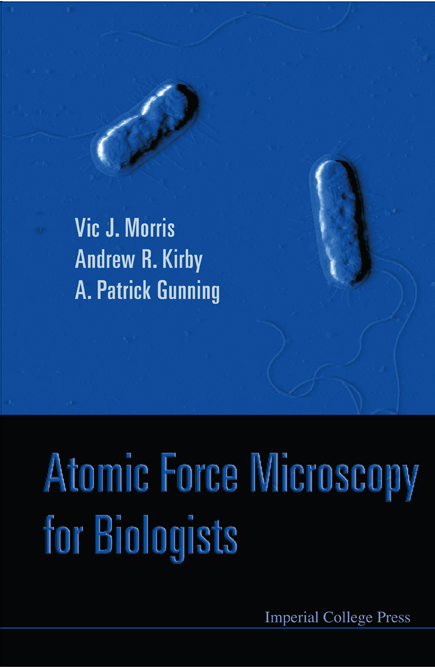Atomic force microscopy (AFM) is part of a range of emerging microscopic methods for biologists which offer the magnification range of both the light and electron microscope, but allow imaging under the "natural" conditions usually associated with the light microscope. To biologists, AFM offers the prospect of high resolution images of biological material, images of molecules and their interactions even under physiological conditions, and the study of molecular processes in living systems. This book provides a realistic appreciation of the advantages and limitations of the technique and the present and future potential for improving the understanding of biological systems.
The second edition of this bestseller has been updated to describe the latest developments in this exciting field, including a brand new chapter on force spectroscopy. The dramatic developments of AFM over the past ten years from a simple imaging tool to the multi-faceted, nano-manipulating technique that it is today are conveyed in a lively and informative narrative, which provides essential reading for students and experienced researchers alike.
Sample Chapter(s)
Chapter 1: An Introduction (218 KB)
Contents:
- Apparatus
- Basic Principles
- Macromolecules
- Interfacial Systems
- Ordered Macromolecules
- Cells, Tissue and Biominerals
- Other Probe Microscopes
- Force Spectroscopy
Readership: Undergraduates, postgraduates and researchers in biophysics.
“This second edition of an excellent book updates considerably the information contained, and is expanded, too. The main focus of this book are the biological applications of AFM, and these are covered very well … The chapters are in-depth and very informative, and contain lots of useful and detailed information. In general the book is well written with an informal style, and contains useful information for beginners, including detailed information on how to carry out some experiments, answers to common questions, etc. … Overall this book is highly recommended for those wishing to get an overview of the biological applications of AFM.”
Peter Eaton
University of Porto, Portugal
Reviews of the First Edition
“This book fills an important niche by providing an introduction to AFM that will be understandable to a wide range of scientists … the reader is offered an introduction of sufficient brevity to actually be read and of sufficient depth to help in defining the potential uses of SPMs in his or her own research.”
Scott Fraser (California Institute of Technology, USA)
Nature Cell Biology
“I found this book easy to read with clear, simple explanations of a complex topic. I think that the selection of the subjects treated in the book is sufficient for the non-specialist to understand both the basic concepts of the AFM and the production of AFM images in biological systems.”
Microscopy and Analysis
“… is an excellent introduction for anybody wishing to enter this field … In summary I would strongly recommend this book to any biologist planning on carrying out research using SPM imaging techniques and existing users in the field who wish to broaden their knowledge of SPM imaging and the research already carried out on common biological systems.”
Drew Murray
JPK Instruments, Berlin
“This book provides an excellent survey of novel applications. It is nicely illustrated with numerous images from leading experts in the field. Clear descriptions of the apparatus and its basic principles are provided in a way accessible to students/scientists who do not have a strong physics background. It will be useful to biologists, but also non-biologists dealing with biosystems …”
Prof Y F Dufrêne
UCL, Belgium























